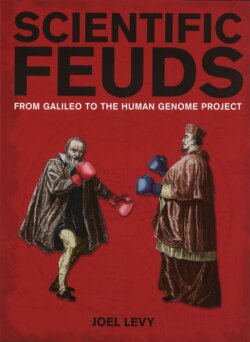Читать книгу Professional Hairstyling - Joel Levy - Страница 29
На сайте Литреса книга снята с продажи.
INTELLIGENT DESIGN AND CREATIONISM
ОглавлениеCreationists are those who believe in the truth of the biblical account of Creation. There are many different stripes of Creationist: Day-Age Creationists, for instance, believe that the six days of Creation mentioned in Genesis correspond to six ages or epochs of geological time; Young Earth Creationists believe that it took literally six days for God to create the Earth. Such an extreme belief is clearly at odds with Darwinian (or most other forms of) evolutionary theory, and fundamentalist Christians who advocate such beliefs try to challenge Darwinism on several fronts.
In America, where the Creationist lobby is powerful and vocal, there have been various attempts to limit the teaching of evolution in schools, such as the infamous Scopes Monkey Trial of 1925; or to ensure that some form of Creationism is taught alongside evolution. These attempts have mostly failed because the courts have deemed them to be attempts to teach religious beliefs in state-funded schools, which contravene the constitutional separation of Church and State in the United States.
In the late 1980s, a new movement arose propounding a theory known as Intelligent Design (ID), which is ostensibly a non-religious critique of Darwinian evolution that builds on the ‘watch on the heath’ argument proposed by William Paley in his 1802 book Natural Theology. Briefly stated, Paley’s argument was that if you were out walking on a heath and came across a watch, you would assume that its intricate construction could not be the result of accident but that there must have been a watchmaker. This is a version of the teleological argument for the existence of God, which says that if there is some form of design or purpose to life/the universe, there must be a designer. Modern ID seeks to show gaps in Darwinism’s account of the universe: for example, the eye is a complex organ that cannot have evolved through intermediate stages as it only confers a survival advantage in its ‘final’ form, in which all the components work together in perfect harmony. If it cannot have arisen by accident, the eye must therefore have arisen by design, which implies some form of intelligent designer.
The ID movement has attempted to circumvent America’s Church–State separation rules by claiming that ID is a science and does not actually invoke God as the intelligent designer, that is is different from Creationism and should therefore be legal to teach in state-funded schools as an alternative explanation of the origin of life. Opponents of ID argue that this is transparent nonsense. In the 2005 Kitzmiller vs Dover Area School District trial, US Judge John E. Jones III ruled that ID is not a science and ‘cannot uncouple itself from its creationist, and thus religious, antecedents’.
